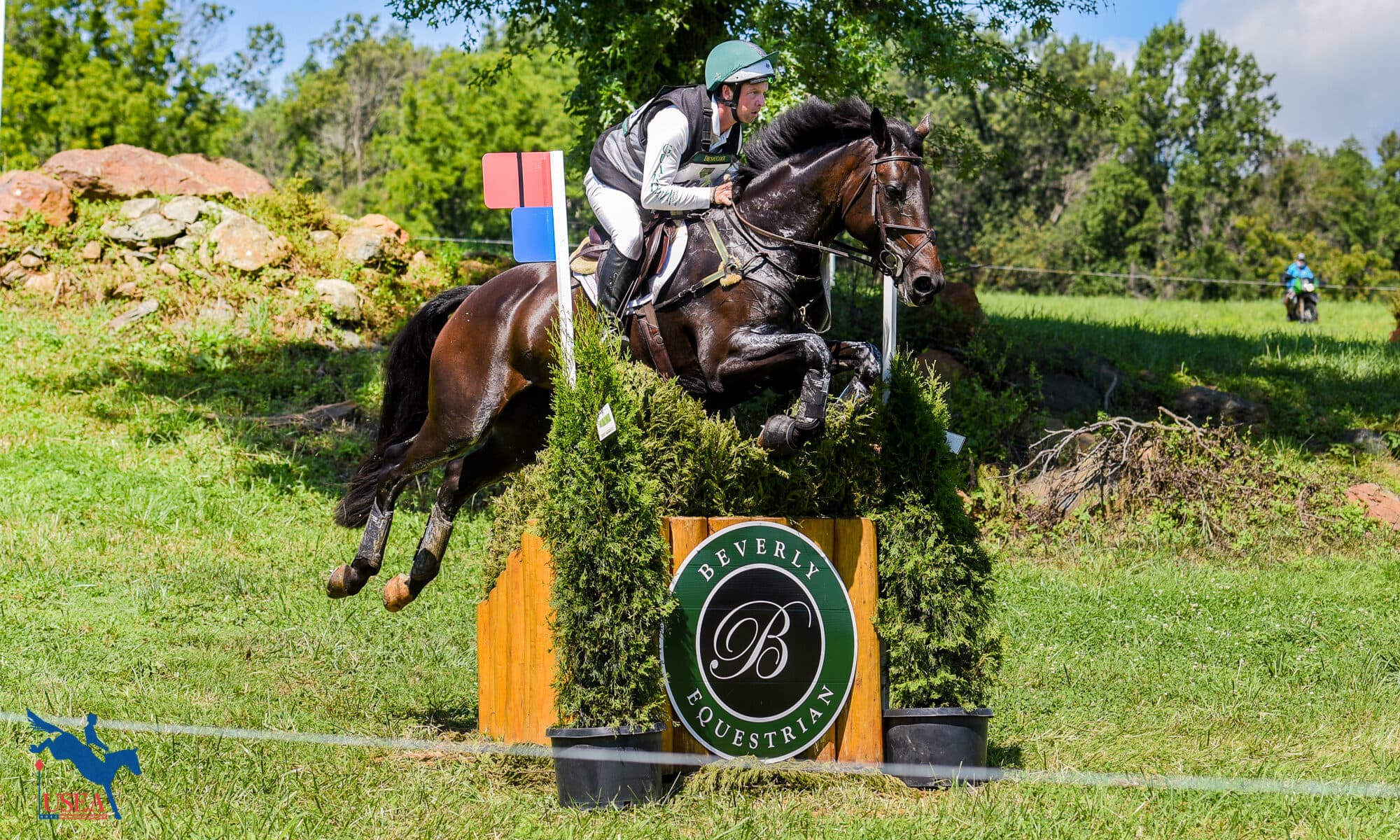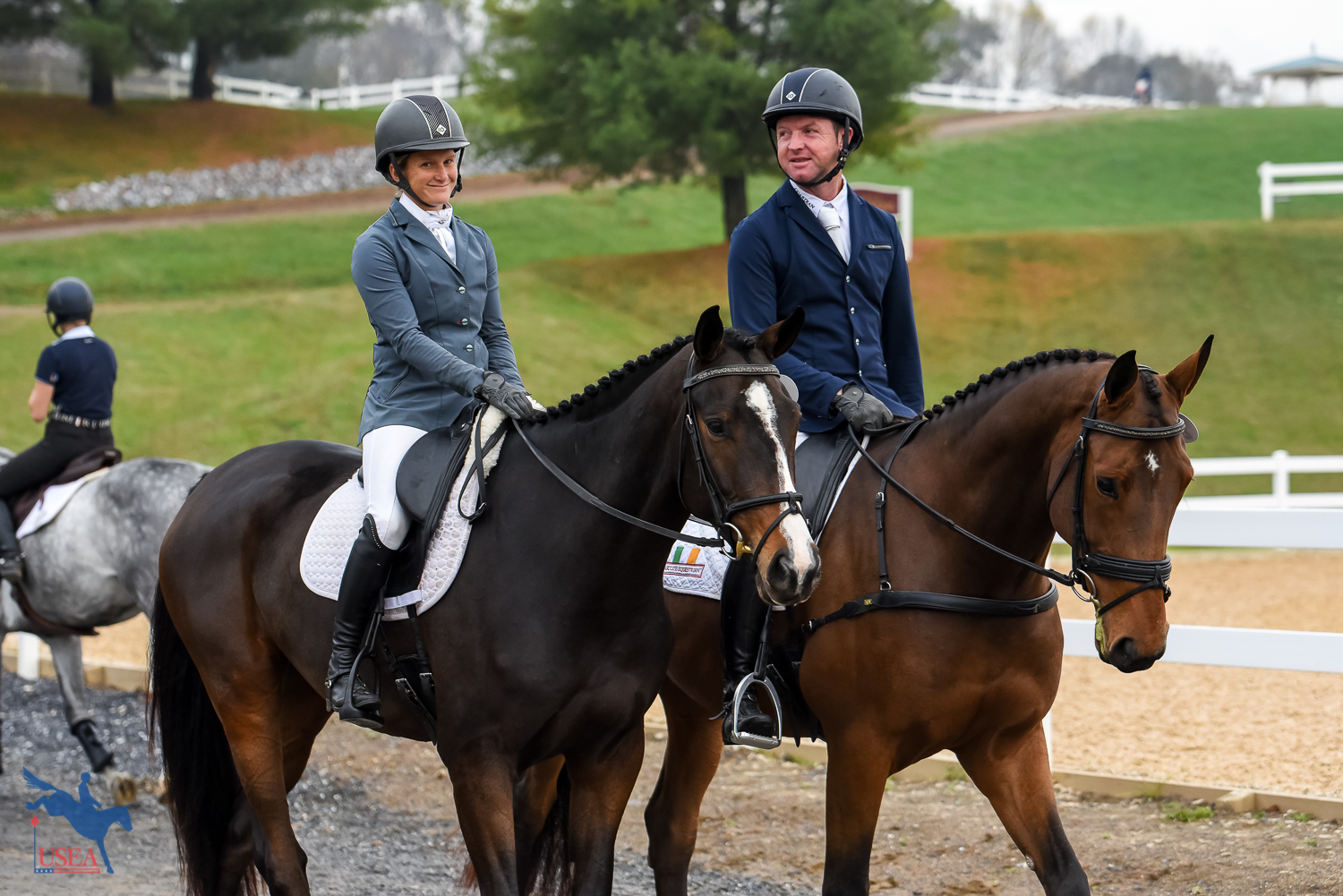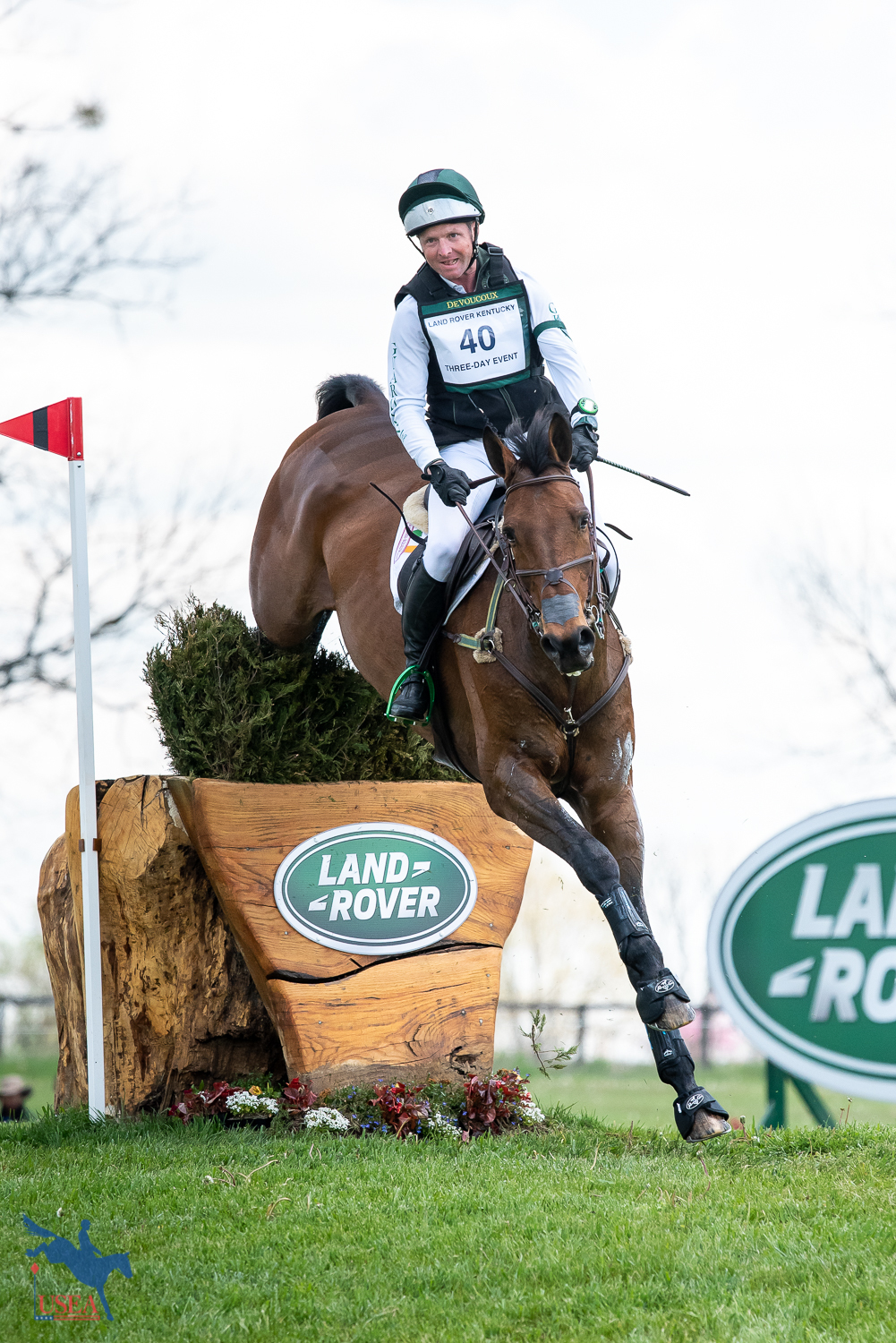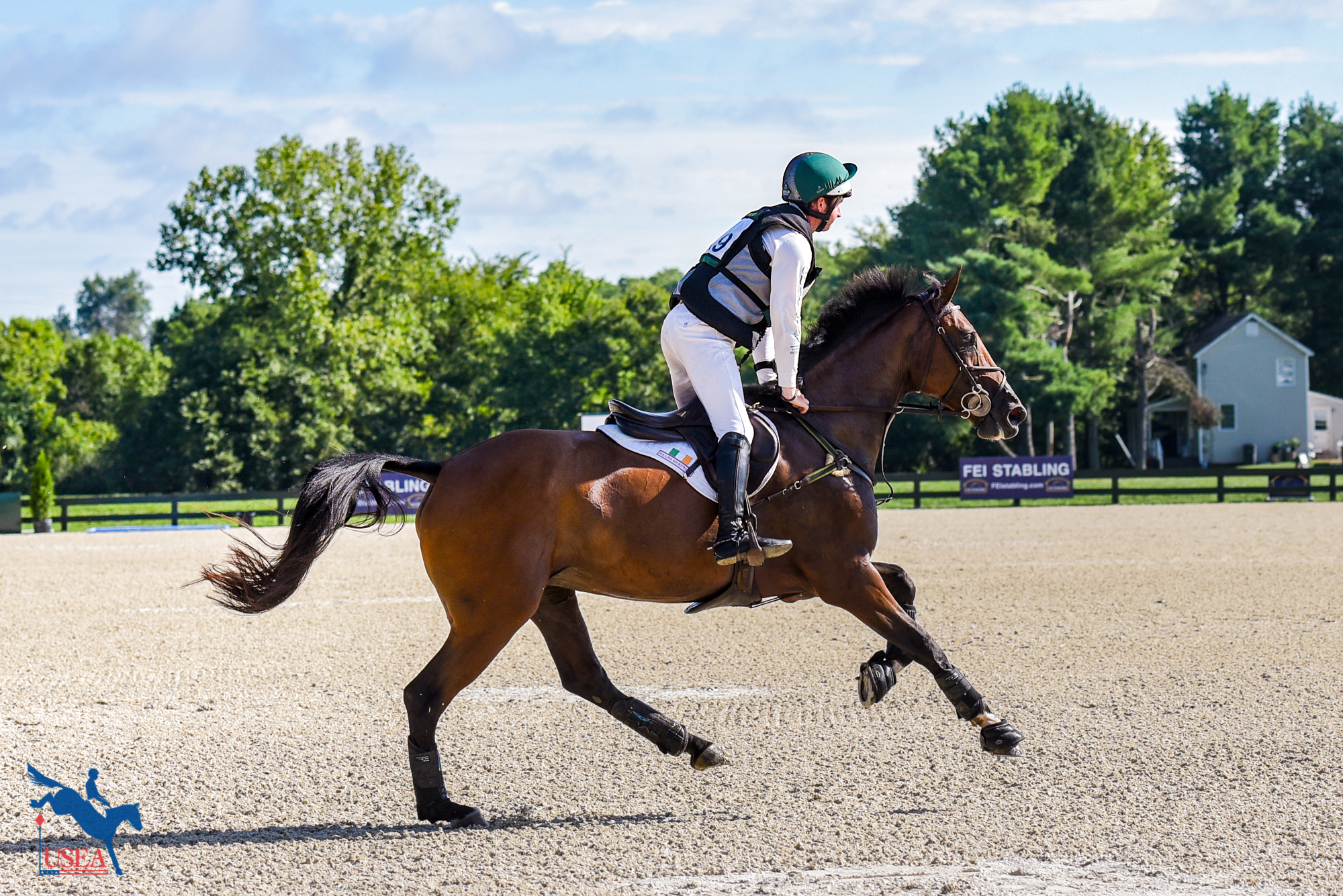Featured Clinician: Tim Bourke

The Featured Clinician article series is provided through a partnership between STRIDER™ and the USEA.
Named as the traveling reserve for Team Ireland for the 2018 FEI World Equestrian Games, five-star eventer Tim Bourke is a popular clinician whose systematic approach leads to sustainable results for both horse and rider.
Raised in Ireland, Bourke rode in Pony Club and became interested in eventing while studying Equine Studies and Business at Gurteen Agricultural College. Upon graduation, Bourke moved stateside to work for Olympic gold and silver medalist Bruce Davidson. After two years in Davidson’s program, Bourke went on to work for five-star rider Sharon White until he and his wife, Advanced eventer Marley Stone Bourke, opened the doors of their own Stone’s Throw Farm in the heart of Area II.
STRIDER caught up with Bourke between rounds at a schooling show near his winter base in Aiken, South Carolina where he had a group of his veteran competition partners, the young horses in his string, and some students to prepare for the spring season.

With a clear and supportive teaching approach for horses and riders at all levels, Bourke is motivated to help his students communicate clearly with their horses and achieve better understanding in the saddle.
“Everyone has different goals - as an instructor you have to understand that," Bourke said. "You can get as much enjoyment teaching a Beginner Novice group as an Advanced group. For me, it’s about when the penny drops for a rider I’m teaching. When someone gets something and has a breakthrough, I feel like it’s been worthwhile. I get a real sense of enjoyment from teaching because of that moment.”
“Clinics for me are different every time. The first thing to understand is that I’m there to help people work through something with their horse. I won’t walk into a clinic with a specific exercise.”
Instead, Bourke takes time to get to know the horses and riders in each lesson group in order to maximize the session for those combinations. “It’s about asking the questions at the beginning of a session; how’s the horse been going? Are there any issues you’ve been working on? How was your last show? That’s how I can get the best idea of whether or not there’s something I can help with.”
“[Teaching clinics] is not about what we’re doing but why we’re doing it . . . My job is to challenge my students, make them a little better, and help with understanding.”

Bourke points out that he finds group lessons quite constructive for his students and enjoys hearing feedback from riders.
“Learning in a group setting can be more valuable than an individual lesson. Watching someone do something well or make mistakes can be really helpful. I always say [to my students]: if it’s not your turn, make sure you’re close to the center of the ring, near where I’m standing so I can explain what’s happening.”
“Towards the end of a lesson, I like to ask; ‘For my sake, as an instructor, tell me one thing that really made sense to you?’”

To break down ideas that can seem complicated for riders into manageable and systematic concepts is a key feature of Bourke’s teaching style. This logical approach is helpful for a wide range of students.
“I always try to explain a little about my theory behind riding and teaching. You have three basic phases of the ride - once you get those down you can move on to things like timing. The first is the quality of the canter, first and foremost. Is the canter good and forward and does it give you options to jump from? The next is reactions. So, if you slow down to jump a fence your reaction upon landing should be to speed up, if you jump too fast then slow down on your landing. The third phase is straightness and awareness of where you are going in the arena.”
“Once you have those three basic pieces down, we can move on to timing. Knowing your horse, knowing where the jumping power needs to come from, and creating more options through footwork.”
“If you think systematically in that way, you can put the horses in a good place to answer a variety of different questions. They’ll be comfortable and they’ll want to go around a course.”

Bourke is a proponent of positive thinking in the saddle. He encourages students to assess their riding with positive phrases instead of emphasizing what might not have gone perfectly in a given exercise or round.
“I’m always looking for that glimmer of positivity - negativity is a bit of a pet peeve of mine.”
A more positive mindset is ideal for riding progress, which Bourke explains is a great foundation for the sport.
“Always continue to get help. In our sport, you have to keep improving and trying to get better all the time.”

For more on Tim Bourke and his program, visit www.bourkeeventing.com. For upcoming clinic opportunities, visit www.striderpro.com.














